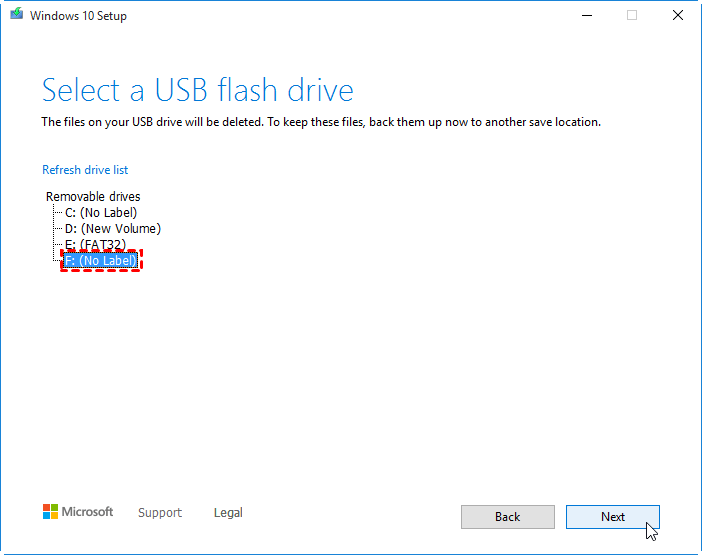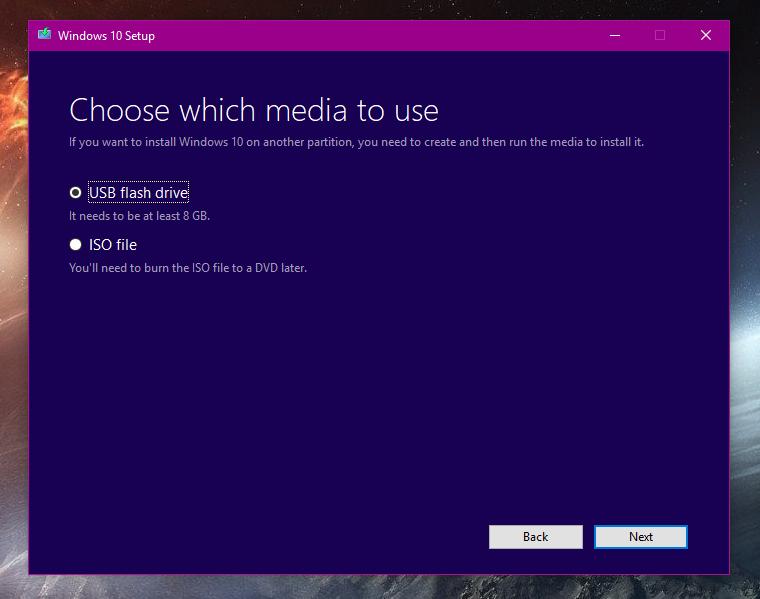

- #INSTALL WINDOWS 10 USB TOOL INSTALL#
- #INSTALL WINDOWS 10 USB TOOL UPDATE#
- #INSTALL WINDOWS 10 USB TOOL UPGRADE#
- #INSTALL WINDOWS 10 USB TOOL PC#
- #INSTALL WINDOWS 10 USB TOOL DOWNLOAD#
Use the "diskpart" command to open the disk partitioning software. To do this, open Run (Windows key + R will do the trick alternatively, it can be found in the Start menu), type "cmd" and then press the OK button. Plug in the USB drive and follow the next steps to create the installation media:
#INSTALL WINDOWS 10 USB TOOL UPDATE#
Update March 17, 2022: This guide was initially published in August 2015, and it’s now been revised and updated to reflect the new changes.I don't think just copying the contents of the ISO to a USB drive will work. If Windows 10 is not activated after the upgrade, on Settings > Update & security > Activation, click the Troubleshoot button to start the Activation troubleshooter utility.
#INSTALL WINDOWS 10 USB TOOL INSTALL#
Once you complete the steps, you can boot and install Windows 10 on computers running on UEFI or BIOS, depending on your firmware. Select the location to save the Windows 10 ISO automatically.Ĭontinue with the default settings after the download.Ĭlick the OK button to confirm the deletion of the USB flash drive data. (If it’s a newer device, you may want to select the 圆4 option.) Select the operating system architecture ( 圆4 or x86). Select the language for the installation. Select the edition, including Windows 10 Home and Windows 10 Pro, or Windows 10 Education.

Under the “Release” section, select the version of Windows 10 to download.
#INSTALL WINDOWS 10 USB TOOL DOWNLOAD#
Under the “Boot selection” section, use the drop-down menu and select the Disk or ISO image option.Ĭlick the down arrow button on the right side and select the Download option. If you do not see the device on the list, you may need to restart the tool. Quick tip: You will need to connect a USB flash drive of at least 8GB of storage.

Under the “Device” section, use the drop-down menu, and select the USB flash drive to create the bootable media.

Under the “Settings” section, use the “Check for updates” drop-down menu and select the Daily option.Ĭlick the Close button again to close the app. Under the “Download” section, click the link to download the latest version.ĭouble-click the executable to launch the tool.Ĭlick the Settings button (third button from the left) a the bottom of the page. To create a bootable media to install Windows 10 from USB using Rufus on UEFI or BIOS devices, use these steps: Create Windows 10 bootable USB using Rufus Select the USB flash drive from the list, but make sure that it doesn’t have any important files as this process will erase everything on it.Īfter completing the steps, you can start your computer using UEFI or BIOS with the USB drive to install Windows 10. Quick note: if you are about to create a Windows 10 USB for another device, you can also clear the “ Use the recommended options for this PC” option to select the correct language, architecture, and edition.
#INSTALL WINDOWS 10 USB TOOL PC#
Select the Create installation media (USB flash drive, DVD, or ISO file) for another PC option. Under the “Create Windows 10 installation media” section, click the Download tool now button.ĭouble-click the MediaCrationToolxxxx.exe file to launch the tool. To create a Windows 10 USB installation media with the Media Creation Tool, use these steps:
#INSTALL WINDOWS 10 USB TOOL UPGRADE#
This guide will teach you how to create a USB flash drive to upgrade or reinstall Windows 10 on different devices using the Media Creation Tools and Rufus. Furthermore, you can even use third-party tools like Rufus to download and create a bootable media to install Windows 10 from USB. The tool helps perform an in-place upgrade or create an installation media using a USB flash drive to perform a clean install. However, if you do not want to wait for the automatic upgrade, the company lets you download the Windows 10 installation files using the Media Creation Tool. Instead, Microsoft upgrades computers gradually, and it takes some time until the new version reaches every device. When a new version of Windows 10 becomes available, not everyone gets the latest release the same day. You can create a Windows 10 USB installation media with multiple tools, and in this guide, we’ll show you how.


 0 kommentar(er)
0 kommentar(er)
